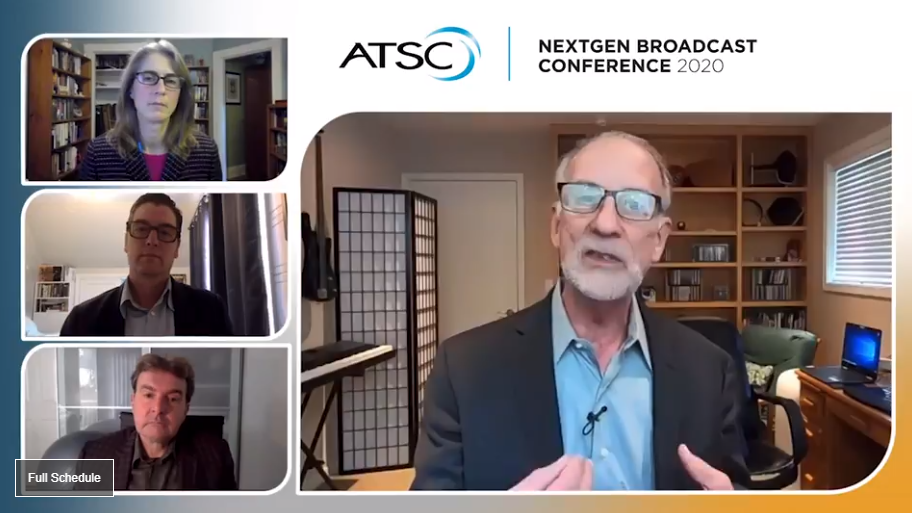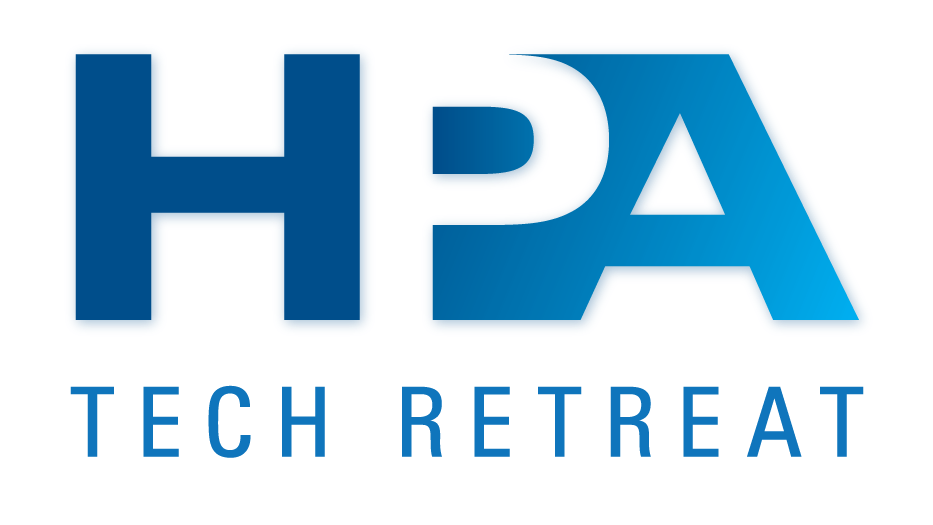NAB NY Offers Comprehensive Look at ATSC 3.0—Part One
The virtual conference offered a view of NextGen TV from multiple angles

NEW YORK—The virtual NAB New York Show took a “deep dive” on ATSC 3.0 on Oct. 26 with a look at where the standard stands today from the broadcast and consumer points of view, its promise, the challenges ahead, new technology developments, deployments and international considerations.
Eight sessions in all, including an introductory keynote by Madeleine Noland, president of the Advanced Television Systems Committee, and a view from the FCC presented by Commissioner Brendan Carr, delivered a well-rounded view of the state of ATSC 3.0.
A VIEW FROM THE TOP
The morning began with Noland laying out the fundamentals of the ATSC 3.0 and some of its most important features as well as some of the ATSC’s ongoing planning during her opening remarks at the event.
“One of the key requirements of ATSC 3.0 is that the system must be able to evolve in a backward compatible way,” said Noland, noting the standard also has room for near- and longer-term innovation and is able to evolve because of the extensible technologies at its foundation.
Among those technologies are the ATSC 3.0 bootstrap and the physical layer pipes. “…[W]e can continually develop ATSC 3.0 without impacting existing audiences,” she said. “This is a key piece of the architecture, which allows ATSC 3.0 to be a platform.”
The bootstrap allows new frames to be added into the mix to enable future services while instructing legacy 3.0 receivers when to expect the next frame they can recognize, she said. In that way, it will be possible to “interleave the next NextGen frames with ATSC 3.0,” Noland said.
The ATSC president also explained some of the organizational structure of the group that will ready 3.0 for new uses and markets. For example, she noted, Planning Team Eight is investigating and preparing recommendations about a Core Broadcast Network to support ATSC 3.0.
The professional video industry's #1 source for news, trends and product and tech information. Sign up below.
BROADCAST CORE NETWORK
An entire panel at the event examined the topic of a Core Network for broadcasting, including what it is, its relevance is to 3.0, a comparison to the cellular core network, its potential to enable a 3.0 downlink with an LTE-5G uplink and device authentication. An In-Band Distribution link (IDL) and Inter-Tower Communications (ITC) were also discussed as part of the Broadcast Core Network.
Mohamed Aziz Taga, product manager, Rohde & Schwarz, described what a core network is in the context of a cellular network. A core network is the single anchoring point that controls all of the elements—mostly base stations—in the radio access network, he said.
“It is considered as the fundamental cornerstone of the mobile network’s architecture,” said Taga, adding that the core network also manages policy and charges as it relates to billing as well as sessions when a customer is using the network.
Noland explained the role an ATSC 3.0 broadcast core network would play in enabling nationwide IP delivery. “…U.S. broadcast towers each operate within one of 210 market areas,” she said. “So we could say that we actually don’t have a nationwide wireless IP network. Actually, we have 210 individual ones.”
The broadcast core network would coordinate data transmission among the various towers to create a regional or nationwide IP wireless network. Broadcasters could then work together to create one or more coalitions that create these networks, she said.
John Montalban, assistant professor at the University of the Basque Country, discussed how ATSC 3.0, as an IP-based standard, overcomes the impediments historically faced when considering the convergence of cellular and broadcast networks. “I think now we have a huge opportunity with ATSC [3] because… [it is] kind of easy on core points to interconnect both broadcast and cellular services,” he said.
Growing out of this convergence will be a variety of new services broadcasters can support, including offloading live video of sports and entertainment programming with large audiences, he said.
This convergence networks will also require consumer identification and authentication, said Paul Burke, solution architect, Hewlett-Packard Enterprise.
“If we look at… the role of identity and user authentication in [an] ATSC 3.0 deployment…, we’re looking at causing this identity to be federated between… the multiple worlds [where]… the consumer might exist,” said Burke.
A federated identity between the cellular and broadcast worlds will facilitate access to location services, access to premium content and services and even personalized advertising, he said.
Broadcasters should stress the benefits of service offerings to consumers as a way of overcoming possible objections related to privacy concerns, said Burke.
Yiyan Wu, principal research scientist, Communications Research Center Canada (CRC), discussed an IDL and ITC as part of the core broadcast network to distribute broadcast content to broadcast transmission sites, whether they are part of a single frequency network or not.

The benefit of IDL is to reduce operating costs. Relying on layered division multiplexing (LDM), part of the ATSC 3.0 standard, IDL uses part of the broadcast spectrum for one-way distribution of programming to transmitter sites. In practice, a broadcast tower site will transmit a TV program while simultaneously receiving program data to be transmitted in the future on the same frequency, said Wu.
ITC is similar, but uses a two-way in-band distribution link to create an IP network that can be used for datacasting and network control, he said. It also enables different SFN towers to emit different content.
READY AT RETAIL
Representatives from LG Electronics, Samsung, Sony Electronics and Dolby Laboratories addressed the consumer side of the 3.0 equation during the “NextGen TV Is Ready at Retail” session.
Samsung has met its commitment to bring NextGen TV to market, offering support for it in 10 new models of 8K televisions introduced at CES 2020. However, the company hasn’t trumpeted its availability, said Jon Fairhurst, principal standards engineer, Samsung Research America.
“[W]e didn’t say much about it at the time, because new branding is hard,” he said. “So, even if it’s something as simple as ‘Here’s a brand; it makes better pictures,’ it costs a lot of money [and] takes a lot of time and energy to promote it. And something as sweeping as ATSC 3.0 or NextGen TV is an order of magnitude harder.”
Samsung is waiting for the industry to come together and pool its resources so that consumers will begin to ask for NextGen TV, said Fairhurst, adding that the company included 3.0 in its 8K televisions because those are targeted at consumers who “want it all.”
Nick Colsey, vice president, Business Development at Sony Electronics, sees the present time as “a great time” for the NextGen TV launch, which the company also announced at CES 2020.
“People are spending more time at home watching more content, and many people are looking at their TV and thinking well it’s about time I got a bigger and better TV,” he said.
Colsey noted that NextGen TV is “right close” to the entry level in the Sony television lineup, starting at just under $1,000. “We are really trying to seed the market with as many TVs as possible as the station rollout continues,” he said.
Like Sony and Samsung, LG Electronics launched its NextGen TV models at CES 2020 with six premium OLED 4K and 8K models with dual ATSC 3.0 and 1.0 receiver chips, said John Taylor, the company’s senior vice president of Public Affairs & Communications.
“I share Jon Fairhurst’s view that [CES] was a little early yet,” said Taylor. “There weren’t a lot of stations on the air, [and] we’re still in the education mode with retailers.”
PLUS: CES to Mark Debut of ATSC 3.0 Consumer Products
Like Samsung, LG began shipping its NextGen TVs in March, as the severity of the COVID-19 outbreak became clear. “There were concerns early on that there would be supply chain constraints because of the early phases of the pandemic, but thankfully—knock on wood—we avoided major delays and got product out,” said Taylor.
He added that these are still early days because there aren’t a lot of stations on the air with 3.0 service, but “as all the pieces of the eco[system] come together, you’re going to see a lot more promotion and a lot more activity at the retail level.”
Oren Williams, director, Commercial Partners & Standards at Dolby Laboratories, pointed out that his company works closely with Sony, Samsung and LG on 3.0 consumer sets to “maximize the benefit of the Dolby audio technology [AC4] and video technology that’s part of NextGen TV.”
CARR KEYNOTE
FCC Commissioner Carr delivered a keynote speech during the event in which he emphasized the important role broadcasters choosing to deploy ATSC 3.0 will play in the next generation of wireless services while at the same time continuing to offer their traditional over-the-air television service. “I [have] suggested that we should think about this technology as a new competitive broadband,” said Carr.
With 3.0, broadcasters can cover their markets and deliver a 25Mb/s data stream to Americans, said Carr. “I’ve come to refer to these set of applications as broadcast internet services, which is a term that I think captures even more of the innovative applications that are on the horizon.”
ATSC 3.0 can enable broadcasters to compete from a position of strength as hybrid networks find “the most efficient and cost-effective ways to deliver content to users,” said Carr.
Carr recounted steps the FCC has taken or currently is taking to address possible obstacles to 3.0 deployment, ranging from technical and licensing issues to an ongoing proceeding to expand the use of single frequency network and the recently initiated proceeding on broadcast internet, including a declaratory ruling to ensure “broadcast internet services are not weighted down by legacy media regulations.”
The ruling clarified that broadcast ownership rules do not apply to leases between broadcasters and third parties as it relates to provisioning broadcast internet services, he said.
“Broadcasters, innovators, tech companies [and] investors are now on notice that they can generate the scale and the geographic footprint, both locally and nationally, that may be necessary to support broadcast internet services,” Carr said.
Look for Part Two later this week.
To view the sessions on demand, visit the NAB Show NY website.
Phil Kurz is a contributing editor to TV Tech. He has written about TV and video technology for more than 30 years and served as editor of three leading industry magazines. He earned a Bachelor of Journalism and a Master’s Degree in Journalism from the University of Missouri-Columbia School of Journalism.

